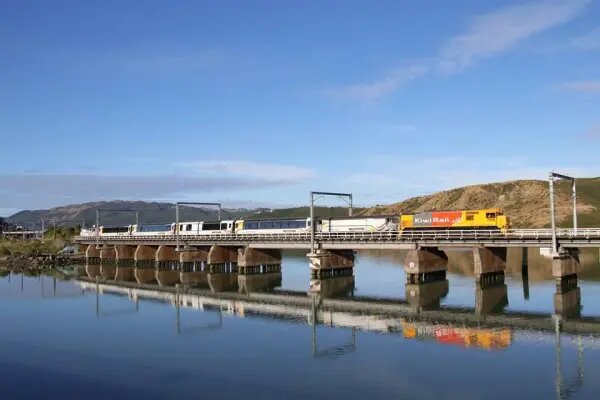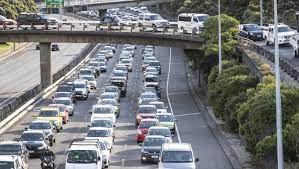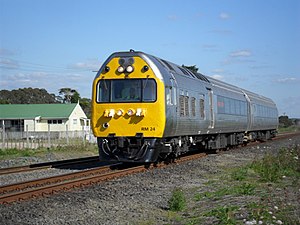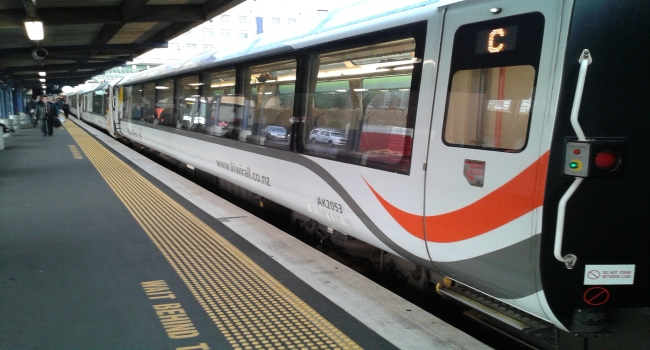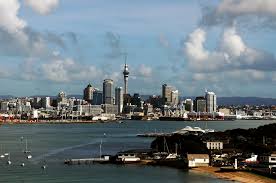Opinion: With KiwiRail's decision to 'pause' the country's last remaining long-distance passenger routes, New Zealand's plans to reduce transport emissions are deeply compromised.
Last year was the Year of Rail across the European Union. A key driver has been achieving transport emission reductions. Despite the on-going pandemic, considerable investment has been going into long distance passenger rail. This includes the revival of many night train services.
By contrast, 2021 in this country marked the end of the Northern Explorer passenger train service that linked Auckland and Wellington. Gone too is the Coastal Pacific, which once linked Picton and Christchurch.
Instead KiwiRail has plans to use the trains "to create multi-day experiences that showcase the best of New Zealand, both on and off the track". Rather than allowing everyday New Zealanders the chance to lower their carbon footprint, the trains will cater to the elite end of the tourism market.
"It’s a great way to travel, no motion sickness, one can read, with on board food, drink and toilets available. When the option is not there I take whatever else is available. Reluctantly.” – Vicki Irons
A passenger rail network of eight lines and 2700 km in 2001, which shrank to four lines and 1340 km by 2020, now just has three short routes left, Wellington–Palmerston North, Wellington–Masterton, and Hamilton–Auckland, totalling 348 km. For tourists, there is still the train from Christchurch to Greymouth.
By comparison, Australia has 27 intercity rail lines, some of which run at up to 160kmh, plus seven additional tourist routes.
Climate conscious traveller Vicki Irons has used the Northern Explorer and the Coastal Pacific and wants to be able to use them again. “It’s a great way to travel, no motion sickness, one can read, with on board food, drink and toilets available. When the option is not there I take whatever else is available. Reluctantly.”
New Zealand is the only advanced economy in the world without a train linking its largest cities. The under investment and decline of New Zealand passenger rail is well documented in André Brett’s aptly named 2021 book Can’t get there from here.
Now, those wanting to travel between Auckland and Wellington or points in between must fly, drive, or, if wanting a low carbon option, take a bus with (unlike services overseas) no on-board toilets.
In his final chapter, Brett sets out a vision for passenger rail revival. Politically, the only major party supporting passenger rail are the Greens. But it is rare to hear them articulating this view.
The Government’s Rail Plan, published in 2021, has little to say about long distance passenger rail. Equally, the Climate Commission is silent on the contribution long distance rail could make to help decarbonise domestic travel.
“Three out of four legs of my last trips from Wellington to Auckland were by train. It’s a choice I’ve made to try and fly less. We can’t ride trains that aren’t running.” – Rebecca Matthews, Wellington City Council
It has been non-governmental organisations and individuals that primarily have been arguing for passenger rail. In 2017 the Auckland group Greater Auckland set out a plan for developing rapid rail within the golden triangle of Auckland, Hamilton and Tauranga.
A coalition of rail interest groups, under the umbrella name of the Public Transport Forum NZ have just launched an initiative known as Connecting Communities 2030. This has a strong climate change focus. Bringing back a night train between Auckland and Wellington has also been discussed and is being investigated by Transdev.
In addition, in direct response to the withdrawal of the Northern Explorer and the Coastal Pacific, a loose group of concerned passengers has launched the Save Our Trains campaign to reverse this decision.
Lending support to this campaign, Wellington councillor Rebecca Matthews tweeted:
“Three out of four legs of my last trips from Wellington to Auckland were by train. It’s a choice I’ve made to try and fly less. We can’t ride trains that aren’t running.”
The present system for improving and expanding passenger rail involves complicated negotiations between central and regional government, KiwiRail, and Waka Kotahi New Zealand Transport Agency. The Rail Plan, published in mid 2021, gives no overall guidance on long distance passenger rail.
In a climate emergency, this process is far too cumbersome to ensure an investment in long distance train services. Complicating any decision to prioritise rail, the government owns not only KiwiRail and the rail network itself, but half of Air New Zealand as well. Through various mechanisms, both central government and local governments lend financial support to the high-emission aviation industry.
A tentative suggestion by the Climate Change Commission to investigate rail electrification was dropped in its final advice. A glimmer of light survives in the draft Emissions Reduction Plan, which directs the government to “develop clearer guidance on the viability of interregional passenger rail, coach, and bus services, and improve the way these projects are planned, funded, and delivered” by 2025.
The draft plan recognises that the Emissions Trading Scheme is far too blunt an instrument to achieve the long-term transition needed in transport. It has many suggestions for reducing driving and increasing other transport modes. The missing link is to realise that the same is true for regional and intercity transport as well.
As the government works towards its final Emission Reduction Plan, it should look to places like the EU and see that trains are part of the way to connect communities and reduce transport emissions.
Dr Paul Callister is a senior associate at the Institute of Governance and Policy Studies. Paul’s current research centres on climate change policy with his main focus is on sustainable transport.
Professor Robert McLachlan is an applied mathematician in the School of Fundamental Sciences, Massey University, and writes on climate & environment.
This article has been republished on publictransportforum.nz with permission from the original authors.
